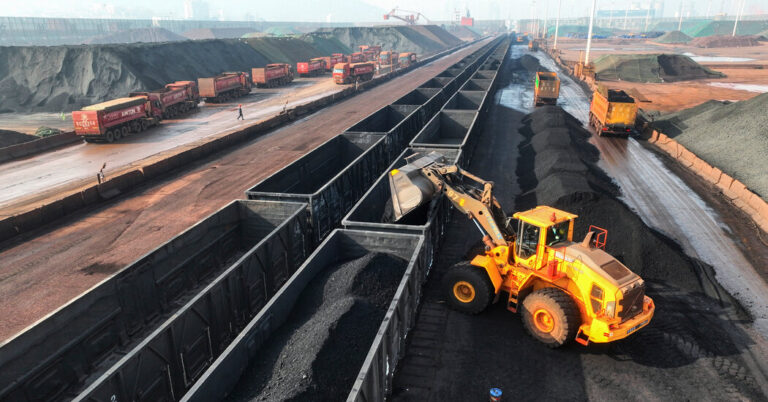The global capacity to generate electricity from coal, one of the most polluting fossil fuels, grew in 2023, driven by a wave of new plants coming online in China as the pace of retirements of older ones slows. old plant in the United States and Europe.
The findings come in a annual report of the Global Energy Monitora nonprofit organization that monitors energy projects around the world.
Coal’s heavy greenhouse gas footprint has prompted calls to phase it out as an energy source, and all countries in the world have broadly agreed to reduce their reliance on coal. But industrialized economies, especially Asian countries with cheap access to domestic coal reserves, have set longer horizons for their transitions.
China alone accounted for two-thirds of the world’s new operating coal plants last year. Indonesia, India, Vietnam, Japan, Bangladesh, Pakistan and South Korea also inaugurated new plants, which typically operate for two to three decades.
A silver lining is that new coal plants are generally less polluting than older ones, but scientists, climate researchers and activists agree that moving away not only from coal, but from all fossil fuels, needs to happen as soon as possible to avoid the worst consequences. of global warming.
“Right now, the future of coal is a two-part story: What do we do about the current operating coal plants, and then, how do we make sure that the last coal plant to exist is one that’s already built,” said Flora Champenois, one of the authors of the report. “If it wasn’t for the rise of China, we’d be here.”
China, and, to a lesser extent, India, are still planning to build coal plants many years from now. In 2023, new coal plant construction reached an eight-year high in China. If China builds all the others it has proposed, it will add the equivalent of one-third of its current operating fleet.
Today, China accounts for about 60 percent of the world’s coal use, followed by India and then the United States. India is heavily dependent on coal, with 80 percent of its electricity generation coming from it.
The flip side of coal growth is a slowdown in plant retirements in Western economies. Fewer were decommissioned in 2023 than in any year in the past decade. Phasing out all operating coal plants by 2040 would require closing an average of nearly two coal plants per week.
Analysts say the slowdown in 2023 may be temporary, as the United States, Britain and European Union countries have set different targets to close all their existing coal plants by 2040. modeling by the International Energy Agency suggests that, to meet the goal of limiting global warming to 1.5 degrees Celsius over preindustrial levels, rich countries should phase out coal by 2030 and it should be phased out everywhere by 2040 .
“We said that 2024 is the year that coal is on the rise,” said Carlos Torres Diaz, a senior vice president at Rystad Energy. “But right now, I would say it is not clear that we will hit that. We’re close, in any case.”
Western countries have relied on coal for over a century, which is why, in no small part, they are responsible for most of the historical greenhouse gas emissions.
In an attempt to balance financial responsibility for the energy transition, wealthier countries have pooled tens of billions of dollars in loans to some coal-dependent developing countries such as Indonesia, Vietnam and South Africa to help them develop renewable energy to move faster. away from coal. For now, however, much of that money remains unpaid as stakeholders avoid disagreements.
For many developing countries, coal has one major advantage: It’s cheap. Its price has proven to be less volatile than oil and gas, the other major fossil fuels used to generate electricity.
Bangladesh, for example, is increasing its gas capacity. But fluctuations in price and availability, stemming mostly from shocks related to the war in Ukraine, prompted a rethink and reinvestment in coal.
The same dynamic is, to some extent, true in China, analysts said. Due to the impact of the pandemic on China’s economy, its utilities are more likely to opt for the cheapest fuel: coal.
China is also leading the world in the expansion of renewable energy. That growth outpaces coal growth, and in some cases is tied to it. China’s government says most of the coal it uses or plans to use will serve as a fallback for times when renewable production declines and the grid needs more energy.
“Although the data is not entirely clear from China, it is possible that while there may be more coal plants there may also be lower utilization of them,” Mr. Diaz said. “But when it comes to coal, because China is such a big part, whatever happens there really determines the global trend.”
